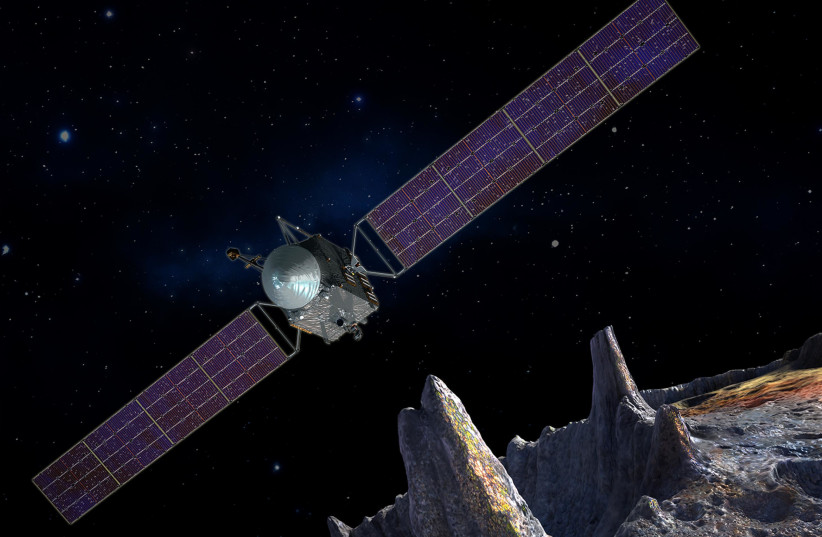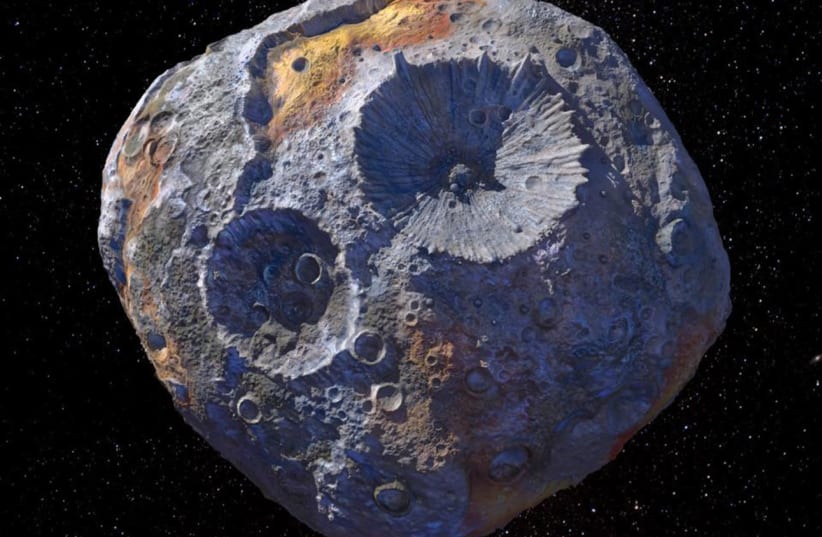The massive asteroid 16 Psyche is longer than the maximum length of the entire nation of Cyprus and was once thought by scientists to have a worth of around $10 quintillion, but new research is casting this into doubt.
The study, published in the peer-reviewed academic journal JGR Planets, takes a new look at the large M-type asteroid, which is set to later be the subject of a widely anticipated NASA mission.
What is 16 Psyche?
The massive asteroid sits within the asteroid belt between Mars and Jupiter. With a diameter of approximately 227 kilometers, its size cannot be understated, and it even has observable gravitational perturbations on other nearby asteroids.
Using these perturbations as a reference, it is possible for scientists to calculate the asteroid's mass and, from there, estimate its composition.


According to most scientists, 16 Psyche was considered an M-Type asteroid, meaning it was the core of a proto-planet. As such, it would have been rich in minerals.
This itself isn't unusual. Many asteroids are rich in minerals like iron or nickel. In fact, they are so full of minerals that many scientists and experts have advocated for asteroid mining as a more environmentally-friendly source of these minerals.
But 16 Psyche wasn't thought to be just like any other. No, it was much bigger.
As noted in a study published in the academic periodical the Planetary Science Journal (PSJ), which used ultraviolet light to reflect the surface of the asteroid in order to gauge composition, 16 Psyche is likely so full of iron and nickel that the asteroid would be worth around $10 quintillion – an astronomical sum that is out of this world, as it is, quite literally, worth more than all the money on Earth.
How much is 16 Psyche worth?
Previous studies have cast doubt on 16 Psyche's exact composition before, as well as its value.
Despite the initial valuing of $10 quintillion by the PSJ study, not everyone agrees. According to asteroid value ranking site Asterank, which estimates the monetary value of asteroids, 16 Psyche is worth just $27.67 billion, an insanely high number to be sure but a far cry from the $10 quintillion estimate.
Regarding the composition, other studies have discussed this already. Another study in PSJ, for example, conducted a temperature map of the asteroid's surface and found that it gave off 60% less heat than expected. Their conclusion was that the asteroid's core might be metallic but its surface seemed to be very rocky.
This seems to have been the work of ferro-volcanoes, which essentially erupt molten iron onto the surface, spreading metal fragments throughout the surface.
Now, this new study has taken a different sort of look.
How did researchers figure out how much the asteroid is worth?
Carried out by researchers at Brown University, the researchers attempted to examine some of the contradictions surrounding 16 Psyche.
Essentially, reflections of light make it seem like it is mostly metal and might be the exposed iron core of a proto-planet. However, that would mean it was essentially a massive hunk of iron and, therefore, incredibly dense.
But that doesn't seem to be the case.
As mentioned earlier, 16 Psyche is so large that its gravity is able to pull on nearby asteroids. The way it does this, though, suggests it can't be a simple giant hunk of iron. Rather, it would need to be porous, with empty spaces between the solid metal.
Specifically, it would need the ratio of solid metal and empty space to be at a near 1:1 ratio, but is this even possible?
The researchers created a computer model to study this exact question.
And the answer is no.
What is 16 Psyche made of?
Say 16 Psyche really was highly porous but still a massive hunk of iron. For that to have happened, the asteroid would have needed to cool down fast. Specifically, it would have needed to cool down to below 800 degrees Kelvin (around 527 degrees Celsius) very quickly after it was formed in the first place.
This is necessary as if it were any hotter, Psyche's gravity would have literally collapsed the iron's empty spaces in on itself.
But this is also extremely unlikely to ever happen, given the current scientific understanding of the early solar system. 16 Psyche was simply too big to have cooled fast enough.
But what about impacts? Maybe 16 Psyche started off as a massive hunk and only became porous enough after being impacted by other stellar bodies.
Yes, in theory, an impact event could have later caused 16 Psyche to become porous. However, it would take a massive impact to accomplish this, and that would have ended up heating the asteroid back up again, which would have gotten rid of it.
In other words, it seems unlikely that this massive hunk of porous iron is, in fact, a massive hunk of porous iron.
Why does the Asteroid still reflect light to look like it's covered in metal?
There are a few possibilities, but chief among them is the previously mentioned ferro-volcanoes. This would have brought molten metal onto the surface and could have given it a metallic appearance. Research has backed this up, so it is entirely possible.
But there is a limit to what we on Earth can do right now, given how far away 16 Psyche is.
NASA, however, is working on that.
The US space agency's long-awaited mission to the asteroid – of which its website proclaims: "For the first time ever, we are exploring a world made not of rock or ice, but of metal" – is set to launch a spacecraft in July 2022, set to arrive in 2026. The goal of this mission is to discover just what this asteroid is truly made of. And if it truly is a proto-planet's core, it could help shed light onto the nature of Earth's own planetary core.
In other words, despite being so far and so different, it can bring us closer to understanding the many mysteries of the universe we live in.
